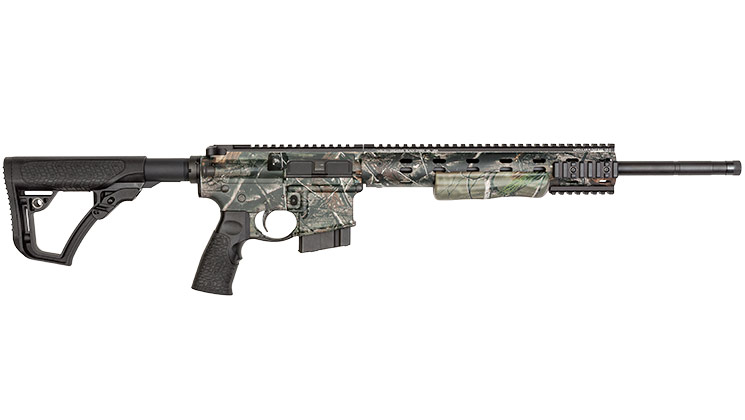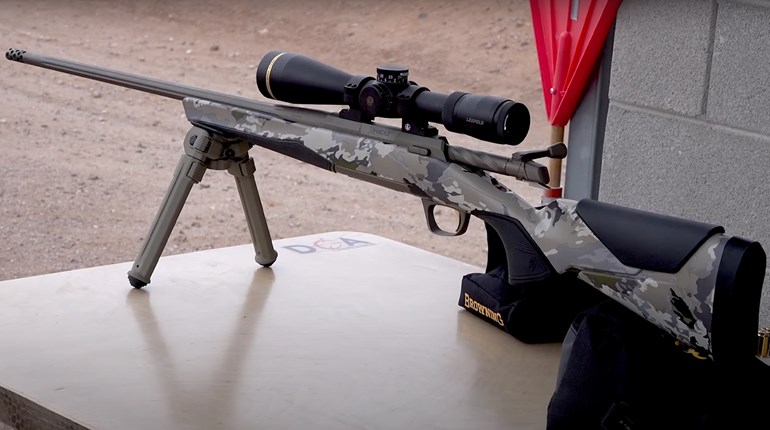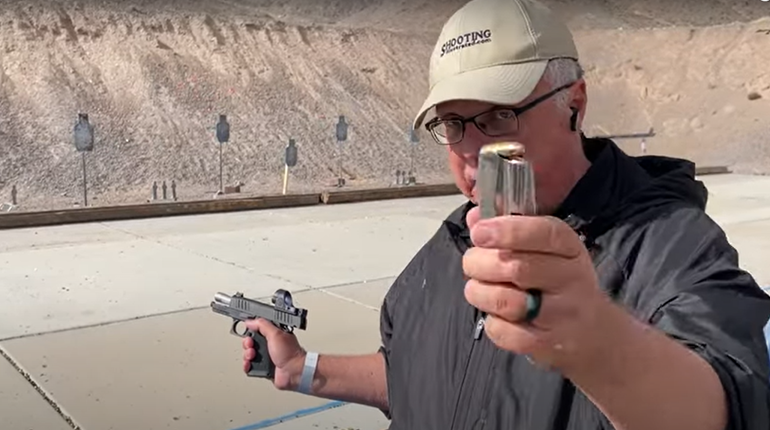
Marty Daniel was always an avid shooter, and he decided back around the turn of the century to offer a few products for the AR-15. He started with sling loops and rails, working in a small corner of his existing garage-door and fireplace company in Georgia. In a very short time Daniel Defense was experiencing 100 percent growth, and it wasn’t long before the company became a huge player in the AR-15 market. By 2009 Daniel Defense was building complete rifles and soon had a reputation for making some of the best guns on the market.
Most of the employees at Daniel Defense are hunters, and they convinced Marty there is a good market for ARs on the hunting side. As a result, he recently branched out and created Ambush Firearms, a company that makes AR-15 rifles for hunting. The guns have the same quality and attention to performance as the defense models, but in designs by hunters, for hunters.
The flagship rifle from Ambush is chambered in 6.8 SPCII. While it has earned a reputation as a deer cartridge, the 6.8mm Remington Special Purpose Cartridge (SPC) was developed with military applications in mind. The concept was to boost the power level beyond the 5.56 NATO in M4-style carbines. It was thought for a while the 6.8 SPC would become a U.S. military service cartridge, but in the end the government took a pass. Today, the 6.8 SPC lives on as a sporting cartridge.
The 6.8 SPC is a cartridge with a varied history. As far as I can tell, there are currently four different chamber designs for it. The two that have emerged into common usage are the SAAMI and the SPCII designs, with the SPCII holding the lead. The Ambush rifle uses the SPCII chamber, which is said to work better with high-pressure handloads and ammo from some specialty loaders. It also works well with ammo loaded to the SAAMI spec, which is what I used in this test and is recommended by Ambush.
With their larger diameter, bullets for the 6.8 SPC can double the weight of the most popular bullets loaded in the .223 Rem. When both are fired from a short barrel, 6.8 SPC bullets show only a moderate reduction in velocity compared to .223 Rem. bullets. That results in a higher level of power that edges the 6.8 SPC into legitimacy for hunting deer and similar-sized game.
I have used the 6.8 SPC pretty extensively on deer, hogs and even a mountain lion. While not in the same class as, say, the .30-06 or even the .308, it’s one of the better hunting cartridge choices for the AR-15 platform. It’s more powerful than the .223, and the .277-inch bullet has a decent ballistic coefficient that results in better downrange performance than those used for some of the big-bore AR cartridges. The 6.8 SPC has more power than the .300 AAC Blackout. With a 110-grain bullet the Blackout produces 2375 fps at the muzzle and 1,377 ft.-lbs. of energy, while a 110-grain 6.8 SPC load has a muzzle velocity of 2550 fps and generates 1,588 ft.-lbs. of energy. The 6.8mm bullet has a higher ballistic coefficient and a higher sectional density. That means it retains more velocity and energy downrange and will penetrate better on impact than the .30-caliber bullet. With good bullets, the 6.8 SPC is a fine option for hunting anything up to whitetail-size game with an AR.
Ambush Firearms makes its own barrels from 4150 ordnance-grade steel using the hammer-forging process, which the company says eliminates the need for break-in. The 6.8 SPCII rifle features an 18-inch barrel with Ambush’s mid-weight S2W profile. The chamber and rifling are hammer-forged at the same time, which ensures perfect alignment and precision. This process eliminates problems like reamer wear and helps produce barrels that are consistent in quality. The barrels are salt bath nitrided for corrosion and abrasion resistance. A 5/8-24 thread at the muzzle allows the addition of a flash hider, suppressor or brake; it comes with a protective cap.
The low-profile gas block and mid-length gas tube are hidden under the 12-inch fore-end, which is made of aluminum and allows the barrel to remain free-floating. The tube-shaped fore-end has a full-length rail on top and three, 3-inch rails on the sides and bottom. These smaller rail sections can be positioned at various points along the fore-end or removed. An adjustable plastic foregrip on the bottom is designed to simulate the feel of a shotgun fore-end.
Ambush machines the upper and lower receivers in-house. The lower has a magazine well with a slight flare to aid in loading, while the upper is a flattop design with a full-length rail. Controls include a right-hand safety lever and a BCM Gunfighter charging handle with an extended latch that makes it easier to operate with gloves. The trigger is a two-stage Geissele SSA. The manufacturer advertises a 4.5-pound total pull weight: 2.5 pounds in the first stage and 2 pounds in the second. My scale says the first stage is 3 pounds, 2 ounces and total pull weight is 4 pounds, 12 ounces.
The gun has a six-position, collapsible buttstock with soft-touch rubber over-molding and two different size buttpads. A collapsible stock is a great idea on a hunting gun, as you can adjust the length of pull to be compatible with the amount of clothing you are wearing. The grip is plastic with the same rubber over-molding as the buttstock and includes an oversized trigger guard.
The bolt-carrier group appears to be the standard mil-spec design, only with the bolt face modified to fit the larger 6.8 SPC cartridge. The buffer and spring also appear to be standard. That makes complete sense in a gun intended for hunting, as the goal is reliability rather than a faster cycle rate.
I tested the gun on a cold winter day. When shooting from the bench, the empty brass piled up nicely at the 4-o’clock position. This indicated the gas system was correctly balanced and the gun ran at an optimal cycle rate. I had one jam that I can’t say for sure was the gun, as it may have been my fault. Other than that, it functioned perfectly. Considering the gun was fresh out of the box and I didn’t clean or lubricate it, I was impressed. Usually a new AR-15 has to have a few hundred rounds through it before it becomes well behaved.
Ambush Firearms offers similar rifles in 5.56 NATO and .300 AAC Blackout. In what I think is a pretty unique option, Ambush will finance your new gun. Go online and apply for financing, and you can be hunting with an Ambush 6.8 SPCII with no down payment and easy payment terms. Getting a new deer rifle has never been easier.

Technical Specifications:
Type: Semi-automatic centerfire rifle
Caliber: 6.8mm Rem. SPC
Barrel: 18"; hammer-forged 4150 ordnance-grade steel with salt bath nitriding; 5-groove, 1:11" RH twist; threaded muzzle
Trigger: 2-stage Geissele SSA; 4.75-lb. pull weight
Sights: one, railed receiver for mounting optics
Stock: 6-position; LOP 10.5"-13.5"
Handguard: ree-floating aluminum tube with full-length top rail
Metal Finish: Realtree AP (tested), black
Overall Length: 3.5"-36.5"
Weight: 7.3 lbs.
Accessories: 5-round magazine, three fore-end rail sections, shotgun-style fore-grip, plastic case
MSRP: 1,799





































